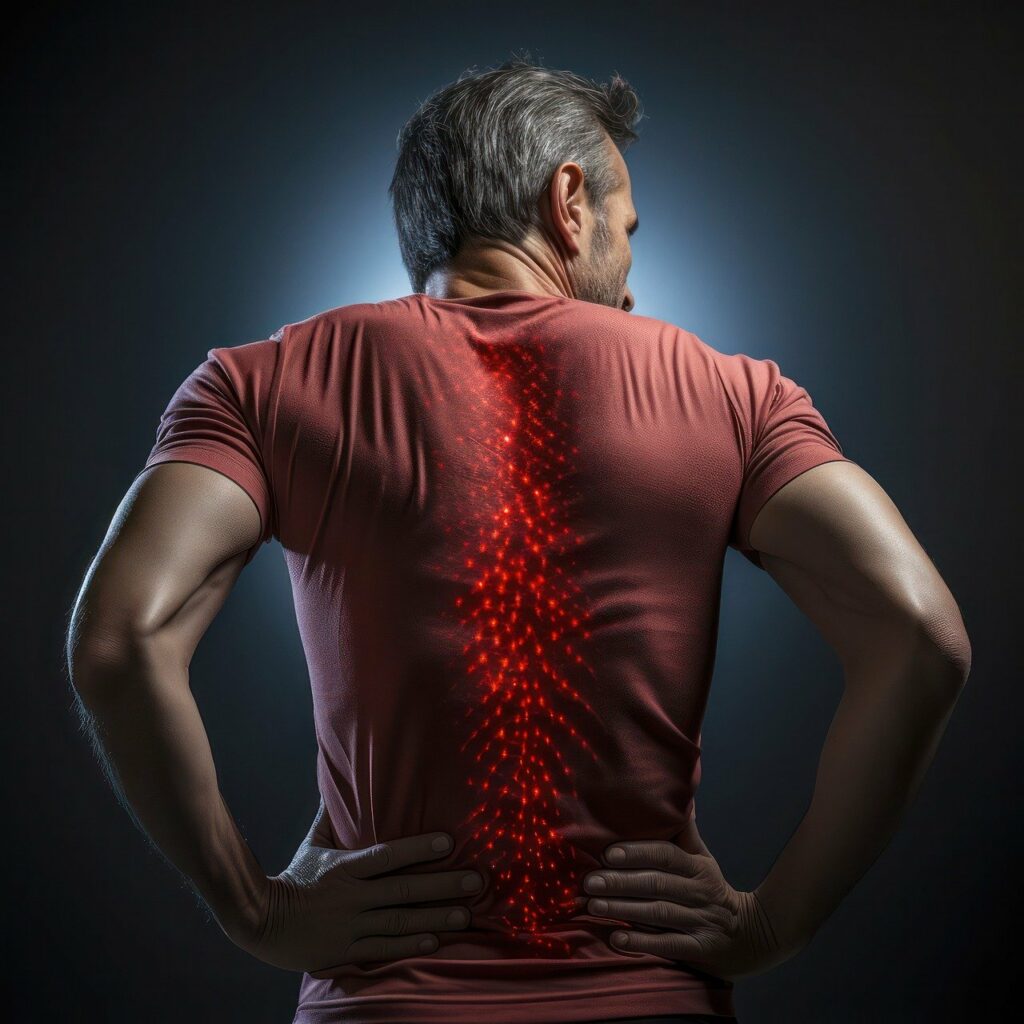A slipped disc, also known as a ‘ruptured or herniated disk, is a condition when the soft cushion-like structure between the bones in the spine bulges out causing discomfort and nerve irritation. This problem often leads to neck or back pain, which can further go down to the pelvis and legs. The disc replacement can result from various factors like aging, injury, or strain, impacting the spine’s flexibility and causing discomfort during movement.
10 signs of Herniated Disc
Herniated disc signs and symptoms can vary from individual to individual, here are some of the most common signs associated with:
1. Severe pain while sitting
Individuals can experience disc pain when sitting for long hours. Sitting posture puts stress and pressure on the lower back. It is always advisable to avoid prolonged sitting hours to prevent pressure and strain. Always try to keep your spine straight to ease the pressure on the spinal cord and reduce overall discomfort.
2. Muscle spasms
It is a possible side-effect of a herniated disc. Spasms or sudden contractions in the muscles around the affected area can lead to additional discomfort. In some cases, the body tries to prevent the pain by contracting and tightening surrounding muscles, further leading to pain and stiffness.
3. Pain worsens by physical activities
Slip disk pain may worsen when you perform physical activities as it puts additional strain on the back. Certain activities like lifting, bending or even walking for long hours might cause pain and discomfort.
4. Weakness in muscles
An individual might notice weakness in certain muscles and nerves. In many cases, it may develop both in the legs and the arms. Therefore, weakness can be uncomfortable and can cause complications in performing day-to-day activities.
5. Pain radiating down in the legs or arms
If the slipped disc presses on a nerve, it can cause pain that travels down to one or both legs and to arms. This pain may be referred to as sciatica causing tingling and numbness sensation.
6. Feeling of numbness
Slipped disc or herniated disc can cause a feeling of numbness in the body. Individuals can feel it in the arms or legs that may even extend to the feet or hands.
7. Difficulty in moving or bending
A slipped disc can cause discomfort or pain even while performing simple basic tasks. Daily activities like tying shoes, lifting objects, or even getting out of bed might become challenging.
8. Tingling sensation
A herniated or slipped disc may cause a tingling sensation in some individuals. If the slipped disc is experienced in the upper spine, it may lead to a tingling sensation in the neck or down the arms to the hands. This sensation can cause discomfort while performing basic activities.
9. Difficulty in finding a comfortable position
Individuals may face complications in finding a comfortable sitting, standing, or even lying position.
10. Bowel or bladder issues
In rare cases, a severely slipped disc can put pressure on the nerves that control bowel or bladder function.
When to see a doctor?
If you’re experiencing prolonged and persistent pain due to a slipped disc it’s crucial to seek medical care. Here are the different signs indicating when to see a doctor regarding a slipped disc:
- Persistent pain – Enduring severe or consistent pain in the back or neck, especially if it doesn’t improve with rest or home remedies.
- Limited mobility – Difficulty in moving, bending, or performing daily activities due to pain and stiffness.
- Radiating pain – Experiencing pain that travels down to arms and legs with a tingling sensation.
- Muscle weakness – Noticeable weakness in certain muscles impacting your ability to perform regular tasks.
- Worsening symptoms – Experiencing pain during specific movements, such as sitting, standing, bending, coughing, or sneezing.
- Numbness or tingling – Feeling a sensation of tingling or numbness in the arms, hands, legs, or feet.
- Loss of bladder or bowel control – Any loss of control over bladder or bowel function requires immediate medical attention.
- Unresolved symptoms – If you are worried about the symptoms or they remain persistent, despite trying home remedies, then it’s crucial to consult a doctor for appropriate treatment.
Diagnosis
Slipped disc diagnosis involves a series of comprehensive processes which include-
- Medical history – The orthopedic will inquire about the overall health, symptoms, duration, and factors of the disc pain.
- Physical examination – The orthopedic may perform some physical tests to determine the muscle strength and sensations in the affected area.
- Imaging tests – While a standard X-ray cannot detect a slipped disc, it can show the outline of the spine and other issues. MRI and CT scans can provide detailed images of the spine, highlighting the abnormalities.
- Nerve function tests – Electromyography (EMG) or nerve conduction studies may be conducted to assess nerve function and nerve damage.
- Specialized tests – In certain cases, myelograms or discograms might be recommended for more precise evaluation of disc-related issues.



Recent Comments